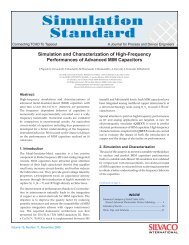Chronovoltametry

Tsyntsaru N., Dikusar A., Cesiulis H., Celis J.-P., Bobanova Zh., Sidel’nikova S., Belevskii S., Yapontseva Yu., Bersirova O., Kublanovskii V. Tribological and corrosive characteristics of electrochemical coatings based on cobalt and iron superalloys. Powder Metal Met. Ceram. 2009. Tribological and corrosive characteristics of electrochemical coatings based on cobalt and iron superalloys. Powder Metal Met. Ceram. 2009. 48: 419. DOI: 10.1007/s11106-009-9150-7.
As nouns the difference between chronoamperometry and chronopotentiometry is that chronoamperometry is (physics analytical chemistry) an analytical technique in which an electric current is measured during the course of a titration while chronopotentiometry is. The chronovoltammetry and chronoamperometry curves in Fig. 4b clearly indicate the discharge of the array when connected to the clock to activate it (‘ON’): there was a rapid decrease followed.
Kublanovsky V. S., Yapontseva Yu S. Electrocatalytic Properties of Molybdenum and Tungsten Alloys in the Hydrogen Evolution Reaction, Chapter 5 in “Electrocatalysts for Fuel Cells and Hydrogen Evolution - Theory to Design”. 2018. Persona 3 portable cheats. IntechOpen: 95. DOI: 10.5772/intechopen.79058.
Weston D., Shipway Ph., Harris S., Cheng M. Friction and sliding wear behaviour of electrodeposited cobalt and cobalt–tungsten alloy coatings for replacement of electrodeposited chromium. Wear. 2009. 267: 934. DOI: 10.1016/j.wear.2009.01.006.
Netherton L. E., Holt M. L. Electrodeposition of Rhenium from Aqueous Solutions. J. Electrochem. Soc. 1949. 95(324): 324. DOI: 10.1149/1.2776763.
Berezina S.I., Keshner T.D., and Sharapova L.G. Influence of the composition of the complexes of the iron subgroup elements on the stimulated cathodic reduction of rhenate ions into an alloy from citrate-glycetate electrolytes. Elektrokhimiya. 1994. 30: 174 [in Russian].
Naor A., Eliaz N., Gileadi E. Electrodeposition of Alloys of Rhenium with Iron-Group Metals from Aqueous Solutions. Journal of The Electrochemical Society. 2010. 157(7): 422. DOI: 10.1149/1.3430084.
Yapontseva Yu. S., Kublanovsky V.S., Vyshnevskyi O.A. Electrodeposition of CoMoRe alloys from a citrate electrolyte. Journal of Alloys and Compounds. 2018. 766: 894. DOI: 10.1016/j.jallcom.2018.07.018.
Yapontseva Y. S., Dikusar A. I., Kyblanovskii V. S. Study of the composition, corrosion, and catalytic properties of Co-W alloys electrodeposited from a citrate-pyrophosphate electrolyte. Surf. Engin. Appl. Electrochem. 2014. 50: 330. DOI: 10.3103/S1068375514040139.
Yapontseva Yu. , Maltseva Т., Kublanovsky V. Corrosion properties of electrodeposited triple superalloy of cobalt with tungesten and rhenium. Ukr. Chem. Journal. 2018. 84: 70 [in Ukrainian].
Calculation of indicators of corrosion of metals and parameters of corrosion systems. 2013. KNITU. 176 p. [in Russian].
Galus Z. Fundamentals of Electrochemical Analysis (New York: Ellis Horwood, 1976). DOI: 10.1021/ed055pA248.2.
Eliaz N., Gileadi E. Induced Codeposition of Alloys of Tungsten, Molybdenum and Rhenium with Transition Metals, Modern Aspects of Electrochemistry. 42, (2008) ed. C. Vayenas et al., Springer, New York. DOI: 10.1007/978-0-387-49489-0_4.
Abstract: The nucleation and growth model of Bi 2Te 3-ySe y film on indium tin oxide-coated glass substrates from an aqueous acidic electrolyte at room temperature were studied using cyclic voltammetry, chronopotentiometry and field emission scanning electron microscope. The electrodeposition process was irreversible and controlled by diffusion, with a limiting current density of 1.78 mA/cm 2. When the deposition current density was lower than the value or above the value but with agitation, the formation and growth of the film were controlled by instantaneous nucleation and gradually growth process, and homogeneous film was formed.
While when the current density was larger than the value without agitation, flocculent film was obtained. Bi 2Te 3-ySe y film deposited at 4 mA/cm 2 with agitation showed smoother morphology compared with the film deposited at 1 mA/cm 2. The electrical conductivity and Seebeck coefcient of the two Bi 2Te 3-ySe y films were measured after being transferred onto a non-conductive rubberized fabric support.

Both the films showed n-type conduction, and the former showed higher electrical conductivity and power factor. Abstract: The cathodic reduction of SiO2 in KCl-CaCl2-NaCl-MgCl2 melt was studied usingtungsten wires as working electrodes.
The results of cyclic voltammetry0001square wave voltammetryand chronopotentiometry showed that the cathodic deposition of silicon is a quasi-reversiblediffusion-controlled reaction, followed by a four electrons transfer step. The results of current reversalchronopotentiometry and thermodynamic data showed that both the silicon deposition and the sidereaction between SiO2 and magnesium result in the loss of magnesium and low current efficiency. A35.2% current efficiency was obtained with the content of SiO2 0.2% at 700 0002. Abstract: Borohydrides present interesting options for electrochemical power generation actingeither as hydrogen sources or anodic fuels for direct borohydride fuel cells and batteries. Thoughthere have been several papers concerning electrochemical determination of relevantthermodynamic and kinetic parameters to the borohydride system, a number of its basic aspectshave not been yet systematically studied.
In this paper we report chronopotentiometric studies of theelectrooxidation of sodium borohydride at a gold sphere electrode in 2M NaOH solutions, attemperatures ranging from 25 to 55 째C. Gold displayed a rather good BH4- oxidation activity, andthe overall oxidation process was shown to be irreversible involving a number of electrons veryclose to the theoretically expected value of 8. The results suggested that the rate-determining step isan irreversible, diffusion controlled, one-electron oxidation step, for which the transfer coefficientswere calculated.